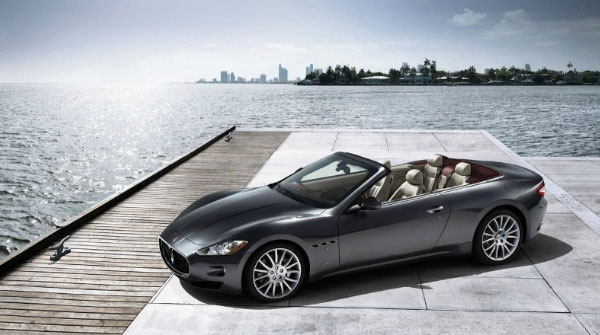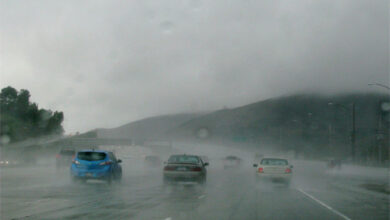A Comparison of Canadian and American Driving Habits

When it comes to driving habits, Canadians and Americans have some ways of doing things that are the same and some that are different. Here is a comparison of Canadian and American driving habits.
Driving habits in Canada and the United States share many similarities but also reflect distinct cultural and environmental differences. Canadians tend to drive more cautiously, often adapting to challenging winter conditions and following stricter traffic and alcohol laws.
They favor fuel-efficient vehicles due to higher gas prices and government regulations. In contrast, Americans generally drive larger vehicles like trucks and SUVs, with longer commuting distances and a stronger car culture fueled by lower fuel costs and extensive highway systems.
While both countries value road safety, Canada’s drivers are typically seen as more rule-abiding, whereas American driving styles vary widely by region—from laid-back in rural areas to fast-paced in big cities.
American vs. Canadian Drivers
Most Americans think of themselves as being a good driver, and so do and Canadian drivers, but are they really? Recent studies show that both countries have some bad driving habits. Many studies have shown that despite living in two entirely different places have surprisingly similar issues when it comes to getting behind the wheel.
Most Reported Good/Bad Habits of Americans
Some of the worst things American drivers say they’ve done behind the wheel include speeding or getting traffic violations, using a cell phone while driving, texting, women putting on makeup, men shaving, and eating or drinking while driving.
Many of these behaviors, like speeding or texting while driving, are illegal too and can result in large fines, while the others, even if not illegal, are still dangerous and cause serious distractions on the road. A seemingly simple action, such as taking a sip of coffee, has been known to cause drivers to lose control and have an accident.
Related Pick: What to do After a Car Accident? | The Ultimate Guide
One good habit that most American drivers do have is that the majority of them believe in being honest when dealing with their auto insurance agents. They say this is because they don’t want to lose their coverage. Insurance companies usually raise rates if drivers have too many offenses or accidents.
Here’s a clear and well-organized comparison table of Canadian vs. American Driving Habits 👇
| Category | Canada 🇨🇦 | United States 🇺🇸 |
|---|---|---|
| Speed Limits | Generally lower — highways average 100–110 km/h (62–68 mph) | Often higher — highways average 120–130 km/h (75–80 mph) in many states |
| Driving Orientation | Drive on the right side of the road | Drive on the right side of the road |
| Measurement System | Metric system – speed in km/h, distance in kilometers | Imperial system – speed in mph, distance in miles |
| Road Conditions | More snow, ice, and winter hazards; drivers are often experienced in winter driving | More varied climates — from deserts to snow regions; drivers in warm states may lack winter driving experience |
| Vehicle Preference | Mix of compact cars, SUVs, and trucks; fuel efficiency often valued | Pickup trucks and large SUVs are very popular; Americans tend to drive larger vehicles |
| Fuel Prices | Higher due to taxes — encourages more fuel-efficient driving | Lower fuel prices — encourages more long-distance and larger-vehicle driving |
| Commuting Distance | Shorter average commutes (urban design is more compact) | Longer commutes and more reliance on cars due to suburban sprawl |
| Public Transportation Usage | Higher, especially in major cities like Toronto, Montreal, Vancouver | Lower overall; limited in many cities outside major metros |
| Driving Style | Generally polite and cautious; more adherence to traffic laws | Often assertive or fast-paced; varies widely by region (e.g., New York vs. Midwest) |
| Alcohol & Driving Laws | Stricter enforcement; lower legal BAC limit (0.05% in many provinces) | 0.08% BAC limit in most states; enforcement varies |
| Insurance Costs | Generally higher due to government-regulated systems | Varies widely by state; private insurance market is competitive |
| Road Infrastructure | High-quality roads with frequent maintenance for winter damage | Extensive highway system; interstates dominate long-distance travel |
| Traffic Enforcement | Use of photo radar and red-light cameras common | Cameras less common; police patrols more prevalent |
| Driver Education | Strict graduated licensing systems (e.g., G1 → G2 → Full License) | Licensing requirements vary; some states are less strict |
| Attitude Toward Environment | Growing emphasis on electric vehicles (EVs) and eco-friendly transport | EV adoption rising but slower in rural areas; cultural attachment to cars remains strong |
Most Reported Good/Bad Habits of Canadians
Canadians too report some bad driving habits, according to a poll by Kanetix.ca. Some of the worst things were the same as the Americans: eating and drinking, talking on a cell phone or texting, and speeding. They also have used other electronic devices while driving like DVD players or MP3 players.
Canadians also seem to be more into electric cars than Americans, according to the poll, and they lean more towards wanting a greener sort of fuel too. The study showed that nearly two thirds of Americans vs. a little over half of the Canadians are interested in reducing fuel costs.
Most Reported Good/Bad Habits of Both
Both sets of drivers have also reported doing things like running red lights because they were in a hurry, tailgating (driving too close to the car in front of you), not turning on their turn signals to indicate a turn, leaving the turn signal on for miles when it wasn’t needed, driving too fast in bad weather, and engaging in arguments or road rage by cutting other drivers off or other actions.
Drivers in both countries have been guilty of these bad habits and most of them report having done at least one of them several times. This means that both sets of drivers would benefit from learning how to reduce these bad habits and learn how to become better drivers.
Everyone Needs to be a Responsible Driver
Driving responsibly is very important, no matter what country you are from, therefore both Americans and Canadians should learn how to have better driving habits on the roads and become better drivers overall. Whether you’re an American driving in Omaha, Nebraska or a Canadian operating a motor vehicle in Kitchener, Ontario, it’s vital for all of us to put greater effort into creating safer highways. People are driving everywhere these days and seldom walk anywhere, but according to surveys posted, Americans are actually driving less than they did in the past. This could be due to the high cost of gasoline, which has reached nearly $5 a gallon in some states in the U.S.
So be sure to take a driving class and learn how to drive responsibly.
